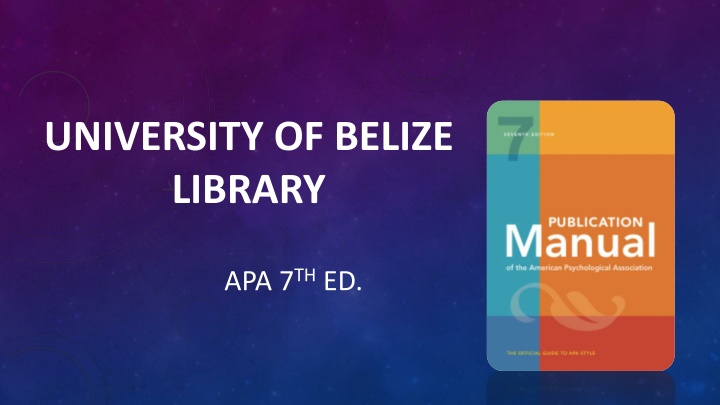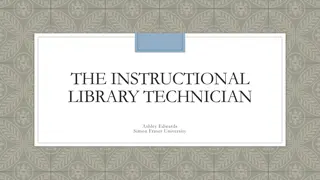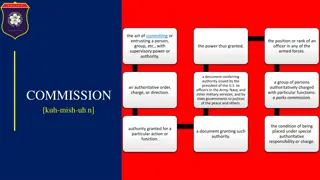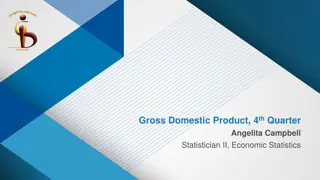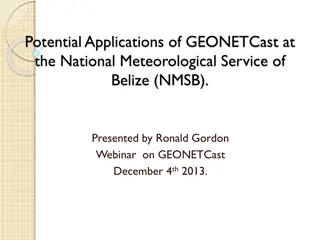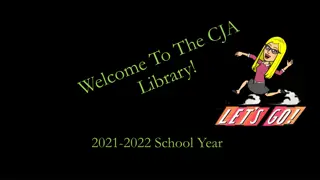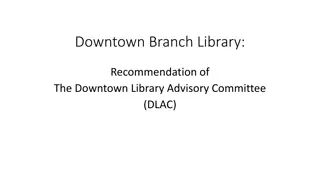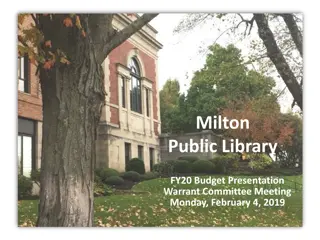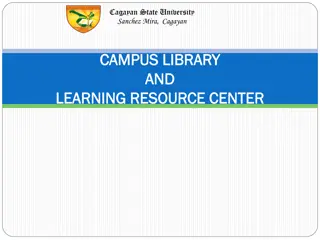UNIVERSITY OF BELIZE LIBRARY
The American Psychological Association (APA) is a widely used academic and professional writing citation guide, especially in the Social Sciences. APA provides clarity, consistency, and credibility to academic papers, helping readers focus on ideas and avoid plagiarism. Learn about the essential sections of an APA paper, including the title page, abstract, main body, and reference page. Gain insights into in-text citations, including author-date citation formats and handling multiple authors or no author situations. Explore the significance of abstracts in APA papers and understand key elements to include. Enhance your writing with APA guidelines for academic excellence.
Download Presentation

Please find below an Image/Link to download the presentation.
The content on the website is provided AS IS for your information and personal use only. It may not be sold, licensed, or shared on other websites without obtaining consent from the author.If you encounter any issues during the download, it is possible that the publisher has removed the file from their server.
You are allowed to download the files provided on this website for personal or commercial use, subject to the condition that they are used lawfully. All files are the property of their respective owners.
The content on the website is provided AS IS for your information and personal use only. It may not be sold, licensed, or shared on other websites without obtaining consent from the author.
E N D
Presentation Transcript
UNIVERSITY OF BELIZE LIBRARY APA 7THED.
WHAT IS APA? WHAT IS APA? The American Psychological Association is an academic and professional writing citation guide. APA is generally used by writers or students of the Social Sciences: Psychology, Linguistics, Sociology, and Business.
WHY USE WHY USE APA APA? ? APA provides clarity, consistency, and credibility to an academic or professional paper. It also, allows readers to focus on your ideas and easily find the relevant information supporting your ideas. Additionally, it helps you avoid plagiarism.
APA APA GENERAL GUIDE. GENERAL GUIDE. An APA paper has four sections, the title page, abstract, main body, and reference page. The title page should include the paper title, student name, affiliation (School or institution), course number and titles, course instructor, and due date. The page number should also be on the upper right-hand corner and a running header is no longer required. Double spacing throughout and only a single space after the ending punctuation. The title of each APA section should be centered and bold. It should not be in all caps . Title Page Abstract Main Body Reference Page
ABSTRACT ABSTRACT The abstract should be 150 to 250 words. It should be one paragraph with no indentation. Content: Briefly introduce the research question or purpose of the study. Concisely describe the methodology used. Summarize the key findings or results. State the main conclusions and implications. Key terms (optional) should be 3-5 keywords directly below the abstract and these should capture the main topics of the research. Do not include information or details not in the paper s main body.
IN IN- -TEXT CITATIONS TEXT CITATIONS Author-Date Citation: The author's last name and the publication year are placed in parentheses. If you are directly quoting, include the page number as well. Example: (Smith, 2020) or (Smith, 2020, p. 45). Example: Narrative Jones and Kim (2019) reported that .. Multiple Authors: For one or two authors, include both names every time the reference occurs. Example: (Smith & Johnson, 2019). For three or more authors, use et al. after the first author's name in the first citation. In subsequent citations, use et al. for all authors. Example: (Smith et al., 2018). No Author: Use the title of the work in the citation. Example: ("Title of the Article," 2017).
IN IN- -TEXT CITATIONS TEXT CITATIONS Group Authors: Write out the full name of the group or organization in the first citation, followed by the abbreviation in square brackets. In subsequent citations, use the abbreviation. Example: (American Psychological Association Multiple works with the same author & year: Differentiate them by adding lowercase letters after the publication year. Example: (Smith, 2022a) and (Smith, 2022b). Personal Communication: Interviews, emails, or other personal communications cite in-text only. Example: (J. Doe, personal communication, April 15, 2023). Direct Quotations: Include location such as page(s) number, paragraph number, and or timestamp. Example: (Johnson, 2018, p. 25). [APA], 2021) or (APA, 2021).
REFERENCE REFERENCE Arrange in alphabetical order by the author's last name or group/organization name. Use a hanging indent for the second and subsequent lines of each reference. Italicize the titles of stand-alone works such as books, and reports. Italicize the volume number for journals, newspaper and magazines. Only capitalize the first word of the title, the first word after a colon, and proper nouns.
REFERENCE CONT. REFERENCE CONT. Book: Author, A. A. (Year of publication). Title of work: Capital letter also for subtitle. Publisher. Journal Article: Author, A. A. (Year of publication). Title of article. Title of Journal, volume number (issue number), page range. DOI or URL Website: Author, A. A. (Year, Month Day of publication). Title of webpage. Website name. URL
REFERENCE CONT. REFERENCE CONT. Newspaper Article: Author, A. A. (Year, Month Day of publication). Title of article. Title of Newspaper, page range. URL Magazine Article: Author, A. A. (Year, Month of publication). Title of article. Title of Magazine, volume number (issue number), page range. URL
THE END THE END
